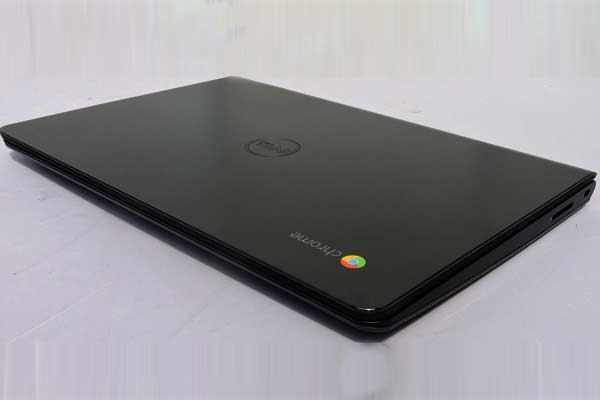Why Do Schools Use Chromebooks? The Hidden Educational Gems
Chromebooks have become increasingly popular in schools across the United States and worldwide.
With over 40 million Chromebooks in education worldwide, it is clear that they have become the most utilized device in education. But why do schools use Chromebooks?
Chromebooks have gained popularity in schools primarily because they are budget-friendly. They offer a cost-effective alternative to traditional laptops and tablets, which makes them an attractive option for schools with limited financial resources.
Additionally, Chromebooks are easy to manage and maintain, which is crucial for schools with limited IT resources.
Another reason why schools use Chromebooks is their compatibility with Google’s suite of educational tools, such as Google Classroom, Google Drive, and Google Docs.
These tools enable students and teachers to collaborate on projects, exchange documents, and enhance communication.
Additionally, Chromebooks are designed to work seamlessly with these tools, making them an ideal choice for schools that rely heavily on Google’s educational ecosystem.
Why Schools Choose Chromebooks
Chromebooks have become increasingly popular in schools across the country. They are budget-friendly, secure, easy to manage, and provide a simplified experience for teachers and students. Here are some reasons why schools choose Chromebooks:
Affordability
Chromebooks are cheaper than regular laptops, making them a smart choice for schools with tight budgets. They can save money by buying Chromebooks in bulk instead of more expensive devices.
Security
Chromebooks prioritize security by including built-in virus protection and automatic updates to safeguard students’ data. Furthermore, they limit access to approved apps and websites, minimizing the chances of encountering harmful content.
Simplicity
Chromebooks are easy to use and manage. They are designed to be straightforward, with a user-friendly interface that is easy for students of all ages to navigate.
🌟 Hey Students! 🚀 Ready for the ultimate experience? Join us on Studentsinside.com's Facebook, YouTube, WhatsApp, and LinkedIn. Click now for tips, fun, and success vibes! 🌈✨ #StudentLife #JoinUs
Teachers can also manage and monitor the devices from a central location, making it easier to ensure that students use them effectively.
Google Integration
Chromebooks are powered by Google, which means they integrate seamlessly with Google’s suite of productivity tools. This includes Google Docs, Sheets, and Slides, which are all free and easy to use.
Teachers can also create and share assignments with students through Google Classroom, making it easier to keep track of assignments and grades.
Versatility
Chromebooks are versatile for many tasks like research, writing, and making presentations. Thanks to the internet and apps, students can use them to finish assignments, work with classmates, and explore topics.
Chromebooks and Remote Learning
Chromebooks gained popularity in schools, particularly during the COVID-19 pandemic when remote learning became essential. They are favored for their affordability, user-friendliness, and portability, making them a perfect fit for online classrooms.
One significant benefit of using Chromebooks for remote learning is their cloud-based nature. Students can access their work from any device with an internet connection. This is crucial for remote learning, as it ensures students can use a dedicated computer at home when needed.
Google Classroom, a popular learning management system, is also optimized for use with Chromebooks. Teachers can easily create and distribute assignments, provide feedback, and communicate with students through Google Classroom. Students can also collaborate with their peers on projects and assignments in real time.
Chromebooks also have built-in security features that protect students’ data and privacy. For example, Chromebooks automatically update to the latest version of Chrome OS, which includes the latest security patches and features. This ensures that students’ data is protected from potential threats.
The Role of Google in Education
Google has become a significant player in the education industry with its suite of tools and services educators and students use.
The company’s focus on providing low-cost, cloud-based solutions has made it an attractive option for schools looking to modernize their classrooms.
One of the most popular tools used in education is Google Docs. This cloud-based word-processing software allows students and teachers to collaborate on documents in real time. Google Sheets, a spreadsheet program, is also widely used in education.
These tools make sharing and teamwork a breeze, simplifying group projects for students and enabling teachers to offer feedback effortlessly.
Google has also made a name for itself in the hardware space with its Chromebook line. These low-cost laptops are designed to be used primarily with Google’s web-based tools and services suite.
Chromebooks are lightweight, easy to use, and can be managed centrally by administrators, making them an attractive option for schools looking to provide their students with affordable technology.
Google offers various valuable services in the education sector alongside its software and hardware products. One such service is Gmail, a widely used email platform in many schools.
Additionally, Google Classroom has become increasingly popular in recent times. This platform simplifies teachers’ tasks by enabling them to create, organize, and track classes, assignments, and grades in one convenient location.
Hardware and Technical Aspects
Chromebooks have gained popularity in schools due to their affordability, ease of use, and low maintenance. They are designed to be lightweight and durable, making them ideal for students who need to carry them around all day.
Most Chromebooks have a battery life of up to 10 hours, which is more than enough for a typical school day. This ensures that students can work on their assignments without worrying about running out of battery power.
Chromebooks also have fast processors that allow students to work on multiple tasks simultaneously without lag.
Chromebooks are designed to be user-friendly, featuring a straightforward and intuitive interface that students can easily navigate.
They come with built-in apps and software specifically designed for education, such as Google Classroom, which allows teachers to assign and grade assignments online.
Regarding hardware, Chromebooks come in different sizes and specifications to suit different needs and budgets. Some models have a stylus, which helps take notes and draw diagrams.
Others are designed specifically for engineering students, with powerful processors and high-resolution displays that can handle complex design software.
Security and Maintenance of Chromebooks
When it comes to technology in the classroom, security, and maintenance are important factors to consider. Chromebooks are designed with both in mind, making them a popular choice for schools worldwide.
Chromebooks receive regular security updates and patches, protecting them against the latest threats. These updates are automatic and happen in the background, so there is no need for IT admins to install them manually.
In addition to security updates, Chromebooks receive automatic updates for the operating system and other software. This ensures that the devices are always up-to-date and running smoothly.
IT admins can also manage and monitor Chromebooks from a central console, making it easy to keep track of devices and perform maintenance tasks when necessary.
Chromebooks are also designed to be resistant to viruses and malware. They use a sandboxing technique to isolate different processes and prevent malware from spreading. Additionally, Chromebooks have built-in virus protection that scans files and downloads for malicious content.
Management and Accessibility Features
Chromebooks are popular among schools due to their easy management and accessibility features.
The Google Admin console allows K12 IT teams to manage their Chromebook fleets efficiently, making configuring and managing devices, setting policies, and monitoring usage easier.
With the console, IT teams can easily install and update apps, manage user accounts, and track device usage.
In addition, Chromebooks come with built-in accessibility features that make them suitable for students with diverse needs, abilities, and learning styles.
One example is ChromeVox, a built-in screen reader that helps visually impaired students access content by reading text aloud from the screen.
Other accessibility features include high contrast mode, magnification, and an on-screen keyboard, which make it easier for students with physical disabilities to use the device.
You can add extra helpful apps to Chromebooks from the Chrome Web Store. For example, a popular one called Read&Write for Google Chrome helps students with learning difficulties read and write better.
The extension includes features such as text-to-speech, word prediction, and translation, which help students with reading and writing difficulties.
Chromebooks Vs. Windows Laptops
Schools have a lot to consider when choosing between Chromebooks and Windows laptops. While both devices have advantages and disadvantages, Chromebooks have become increasingly popular for various reasons.
Chromebooks stand out for their user-friendly simplicity, requiring minimal setup and maintenance. This quality makes them an excellent choice for schools, especially when managing a large number of devices, as it reduces the demands on IT staff in terms of time and resources.
In contrast, Windows laptops can be more complex and require more maintenance. They often come with a lot of pre-installed software, which can slow down the device and make it harder to use.
Additionally, Windows laptops are more susceptible to viruses and other security threats, which can be a significant concern for schools. Another advantage of Chromebooks is their cost.
Chromebooks are usually more cost-effective than Windows laptops, making them an excellent choice for schools on a tight budget. Chromebooks are also more durable, which helps schools save money on maintenance and replacements.
While Windows laptops can handle powerful software, they usually go beyond what’s needed for most school tasks. Chromebooks work well for basic activities like word processing, web browsing, and video calls.
Productivity and Collaboration Tools
Chromebooks are great for schools because they come with helpful tools like Google Docs and Google Sheets.
These tools work online so that students can use them on any device with the internet. Plus, students can work together on the same documents and spreadsheets simultaneously, making group projects much easier.
In addition to Google’s productivity tools, Chromebooks support various Android apps. This opens up possibilities for students and teachers who want to use apps to enhance their learning experience.
For example, students can use apps like Khan Academy to learn new concepts or apps like Duolingo to practice their language skills.
Collaboration is another important aspect of learning, and Chromebooks make it easy for students to work together on projects. For example, students can use Google Docs to create a shared document they can all edit together.
They can also use Google Hangouts to communicate with each other in real time, which makes it easy to ask questions and get help when needed.
Chromebooks and Cloud-Based Storage
One of the critical advantages of Chromebooks in the classroom is their integration with cloud-based storage solutions.
Chromebooks are designed to integrate with Google Drive, a cloud-based storage service, smoothly. This enables users to store, share, and retrieve files from anywhere with an internet connection.
Whether you’re a student, teacher, or anyone else, you can effortlessly access your files and documents from any device – at school, at home, or while on the move.
In addition, Google Drive provides a comprehensive set of productivity tools seamlessly embedded within Chromebooks, including Docs, Sheets, and Slides.
These tools facilitate real-time collaboration, making it simpler for students and teachers to collaborate on documents, presentations, and spreadsheets for group projects or assignments.
From an IT perspective, Chromebooks are also easy to manage and maintain. Because they are cloud-based, updates and security patches are automatically applied, and IT administrators can manage devices remotely and monitor usage through a centralized dashboard.








